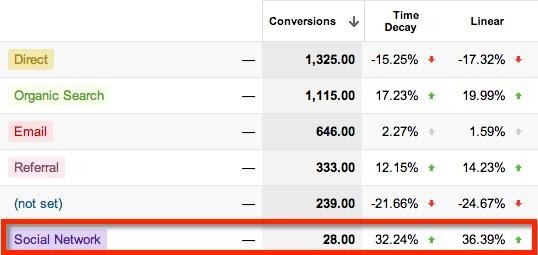
5 Ways to Actually Track Your Law Firm’s Social Media ROI

According to a study conducted by LinkedIn, 58% of marketers have to prove social media ROI to get approval for future budget requests. However, only 37% were “very confident” in their ROI metrics.
Seasoned legal marketers know by now that tracking social media ROI can be really difficult. In a perfect world, we’d know exactly how someone went from finding out about your law firm to becoming a satisfied client. But it’s not that easy.
In this post, we’ll go over common strategies you can employ to track and to prove social media ROI and attempt to get the right attribution.
5 Ways to Track Your Law Firm’s Social Media ROI
1. Clicks to Website By Source
By tracking your law firm website visitors by source, you’ll be able to see how many people are truly engaging with your brand from specific social media sources. Marketers can use this information to understand whether or not your social content is turning your audience into website visitors (who you can also retarget later). Social sources include LinkedIn, Facebook, Instagram, Twitter, and Clubhouse.
Tracking clicks to your website by source will help you to determine which social channels are giving you the most clicks. From there, you can infer that you’ll garner the most conversions from that social channel. Then, you can create more content for those specific social channels driving website traffic and getting the ROI you’re looking for from your time and investment.
You can gather clicks or website visit data in Google Analytics, directly within the reporting tabs on social media, or within your social media management tools (such as HubSpot’s social media management software).
2. Use Google Analytics to Track Email Opt-ins by Source
Website traffic is the first step when it comes to tracking social media ROI, but email opt-ins are truly where it’s at. We’re big-time email marketers and can attribute the majority of our new business (and our clients’) directly to email. However – the issue of attribution comes up. If an email subscriber initially came from social media — then you have to give social media its due credit. This is where we see a lot of legal marketers falter; they give email 100% of the attribution credit where in reality, some is owed to social media.
In Google Analytics, set up custom event tracking for every lead form to see where your subscriber initially came from.
3. Use Google Analytics to Track New Clients by Original Source
In today’s complex digital landscape, it can be difficult to attribute a new client to any particular touchpoint. Your goal here is to understand the part that social played. For example, if someone discovered your firm on social media, but then went on to read several blog posts, downloaded a checklist, spoke to a client intake officer, and eventually read more posts on social media, who gets the “credit”? Map new clients to their engagement activity on social media to ensure that social media is documented as part of the “path” that the new client took.
4. Report on Linear and Time Decay Attribution
When it comes to attribution, you might use these two models to get more specific around social media ROI. A linear attribution gives any visit within the specified lookback window equal credit, while a time decay model gives more recent visits more credit. This is helpful information to have across all digital channels, not just social media. When you pull these figures, compare them to your “new clients by source” information above to get a clearer idea of the big picture social is playing in your efforts.
For example, in the image below you can see that social networks don’t have the highest conversions, but they have the highest linear and time decay. This tells you that even though social ROI might not look big, your audience turns into clients really well from social.
5. Evaluate Sentiment and Share of Voice
An indirect method to track social media marketing ROI is to measure brand metrics. The number of mentions or retweets, sentiment, and share of voice are a few indicators that can be measured quantitatively. Then you can correlate these numbers with new business figures. If new business and social brand metrics move in unison, then there’s a causal relationship. You can test that hypothesis by changing your social media marketing activities and measuring resulting changes in new business.
Mention tracking tools like Mention and the ‘Compare keywords’ module on Hootsuite Pro allow you to track mentions of your brand across multiple platforms, including Facebook, Twitter, LinkedIn, Instagram and YouTube.
Takeaway
In conclusion, social media marketing can both directly and indirectly contribute to new business. We’re still waiting for the marketing tech stack that solves all attribution problems, but the reality is that it’s going to be really hard to create such a thing. That’s where these 5 ways of tracking social media ROI come in. Law firm marketers should always be making sure that their social investment is paying off and the answer is in the data.
If you need measuring and improving your law firm’s social media ROI, contact us for help. We’ve helped countless firms in all different practice areas take their social media performance to the next level.
Let’s get started, and finished
Contact us to get started on your Technology Strength Scorecard and energize your business development process.
Contact Us

